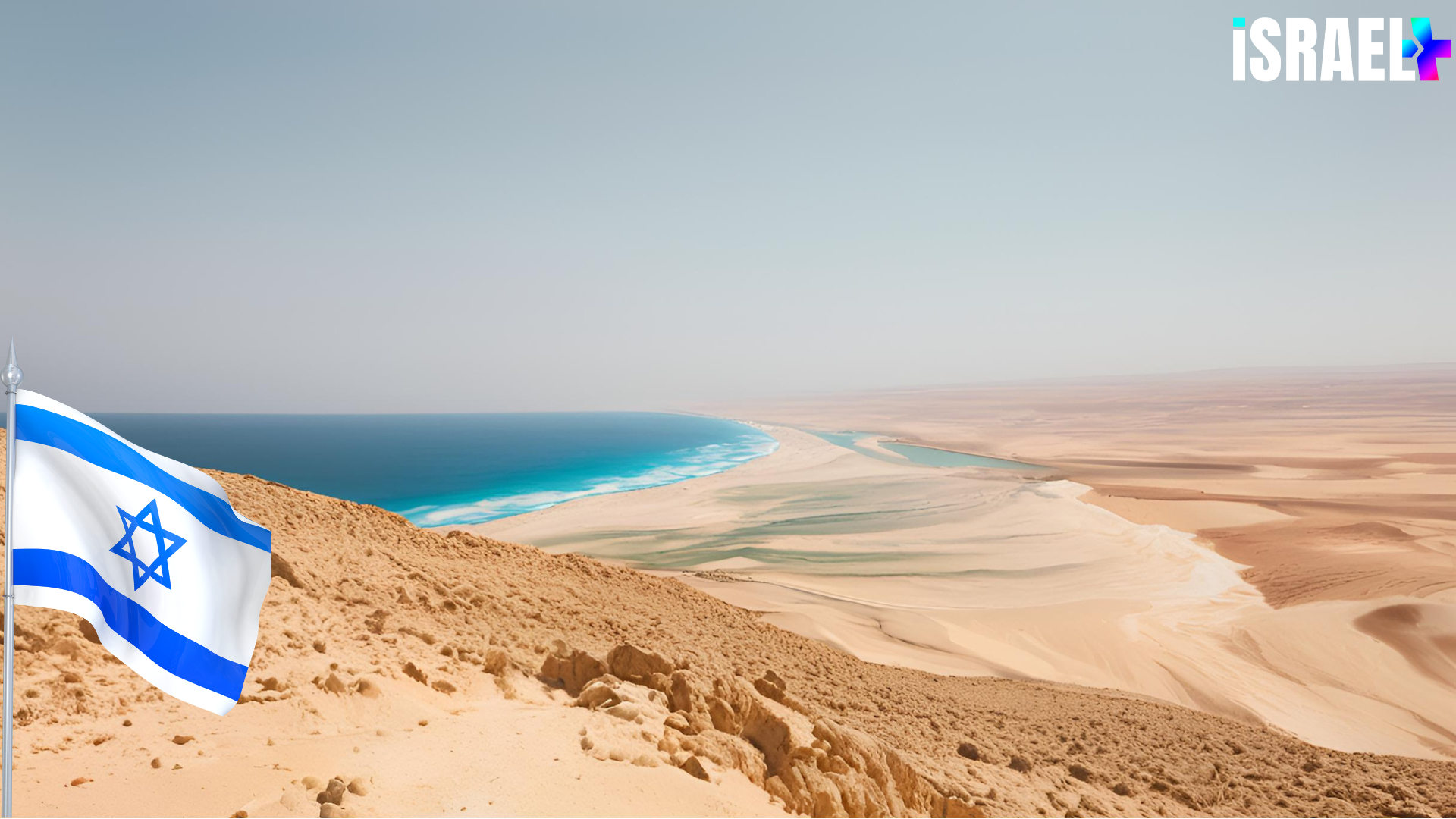Israel is a land of striking contrasts, where diverse landscapes coexist within a surprisingly small geographic area. From the golden sands of the Negev Desert to the lush greenery of the Galilee, and from the rocky cliffs of the Judean Desert to the beautiful beaches along the Mediterranean Sea, Israel offers a rich tapestry of natural beauty waiting to be explored. In this blog, we’ll take you on a journey through Israel’s diverse landscapes, showcasing the country’s unique geographical features and the incredible experiences they offer.
The Negev Desert: A Vast, Silent Beauty
The Negev Desert, which takes up more than half of Israel, is a place of striking beauty and quiet stillness. This vast, dry region features dramatic landscapes like towering cliffs, large sand dunes, and ancient craters.
One of the Negev’s most famous natural wonders is Makhtesh Ramon, the world’s largest erosion crater. It offers stunning views and is a popular spot for hikers, cyclists, and stargazers, thanks to its clear night skies. The clear desert skies provide some of the best conditions for stargazing, and many visitors come to the Negev specifically to experience the beauty of the night sky.
Despite its dry conditions, the Negev is surprisingly full of life. The desert has oases where animals like ibex and hyrax can be seen. Ein Avdat canyon is one such oasis, with waterfalls and pools that attract both wildlife and people looking to escape the desert heat.
For history lovers, the ancient Nabatean city of Avdat is a must-see. This UNESCO World Heritage site was an important stop on the ancient Incense Route, and its well-preserved ruins offer a glimpse into the past.
The Galilee: A Lush, Fertile Region
In stark contrast to the Negev, the Galilee region in northern Israel is known for its lush, green landscapes. This area is rich in vegetation, thanks to its higher rainfall and fertile soil. The Galilee is divided into Upper and Lower regions, each offering its own unique attractions.
The Sea of Galilee (Kinneret) is the heart of this region, surrounded by rolling hills and picturesque villages. As Israel’s largest freshwater lake, the Sea of Galilee is not only a source of water but also a popular spot for recreation. Visitors can enjoy activities such as boating, swimming, and fishing, or simply relax on the lake’s shores and take in the stunning views.
The Galilee is also a region steeped in history and religious significance. The ancient city of Tzfat (Safed), perched high in the mountains of the Upper Galilee, is one of Judaism’s four holy cities. Tzfat is known for its artists’ colony and its deep connection to Jewish mysticism, making it a fascinating place to explore.
In addition to its spiritual and historical significance, the Galilee is a haven for outdoor enthusiasts. The Golan Heights, with its rugged terrain and breathtaking vistas, offers opportunities for hiking, bird watching, and exploring natural reserves such as Banias and Gamla. The region’s fertile land also supports vineyards and olive groves, contributing to Israel’s burgeoning wine industry.

The Judean Desert: A Land of Contrasts
The Judean Desert, located between Jerusalem and the Dead Sea, is a landscape of stark contrasts. While it is a desert, it is also home to some of Israel’s most famous and historically significant sites. One of the most iconic landmarks in the Judean Desert is Masada, the ancient fortress perched high atop a plateau overlooking the Dead Sea. Masada is a symbol of Jewish resistance, where the last Jewish stronghold fell to the Romans in 73 CE. Today, visitors can hike or take a cable car to the top of Masada to explore the ruins and enjoy panoramic views of the surrounding desert and the Dead Sea.
Speaking of the Dead Sea, this unique body of water, the lowest point on Earth, is another must-visit destination in the Judean Desert. The Dead Sea is renowned for its therapeutic properties, thanks to its high mineral content. Visitors can float effortlessly in its salty waters and cover themselves in the mineral-rich mud for a rejuvenating experience.
The Judean Desert is also home to the Ein Gedi Nature Reserve, an oasis of lush vegetation and freshwater springs amidst the barren desert landscape. The reserve is a haven for wildlife, including ibex and hyrax, and offers several hiking trails that lead to waterfalls and ancient archaeological sites.
The Mediterranean Coast: Sun, Sand, and Sea
Israel’s Mediterranean coastline stretches for over 200 kilometers, offering sun-soaked beaches, bustling port cities, and a wealth of historical sites. The Mediterranean coast is where the desert meets the sea, creating a unique blend of natural beauty and urban life.
Tel Aviv, Israel’s vibrant coastal city, is the cultural and economic heart of the country. Known for its stunning beaches, lively nightlife, and thriving arts scene, Tel Aviv is a city that never sleeps. Whether you’re sunbathing on the famous Gordon Beach, exploring the historic Jaffa port, or enjoying a meal at one of the city’s many seaside restaurants, Tel Aviv offers a dynamic blend of relaxation and excitement.

Further north, the ancient port city of Haifa is home to the breathtaking Bahá’í Gardens, a UNESCO World Heritage site. The terraced gardens, set on the slopes of Mount Carmel, offer stunning views of the city and the Mediterranean Sea. Haifa is also a gateway to exploring the Carmel Forest, a lush area of natural beauty that offers hiking, picnicking, and bird-watching opportunities.
Conclusion
As you explore Israel’s diverse landscapes, Israel Plus is your ultimate guide, offering insights, tips, and stories that bring the country’s natural wonders to life. Tune in to Israel Plus to discover the best of Israel’s landscapes, and embark on a journey that will leave you captivated by the beauty and diversity of this remarkable land.



